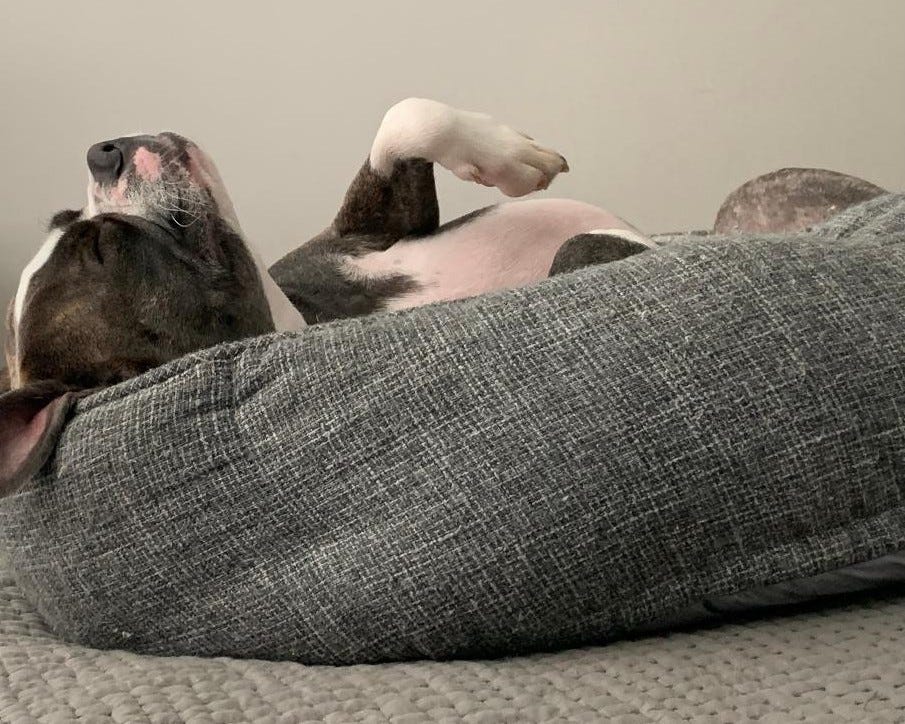
by Lee Williams
I get to walk Willa our Boston Terrier seven to eight times per day. I’m not sure who enjoys it more. Her timing is always perfect. After I’ve been writing for more than a few hours, she will jump into my lap or bite my ankles to let me know it’s time to take a break.
Living in southwest Florida, the weather is our biggest non-tactical concern. We always avoid the hottest part of the day. I also carry a bottle of water and offer her sips while watching out for excessive panting. Boston Terriers are one of the Brachycephalic breeds, so she is more susceptible to heatstroke than other dogs. It’s crucial to adjust the intensity of our walk, and Willa is never shy about offering input.
As to our tactical concerns, some suggestions follow:
One of the most important considerations while walking your dog is that you will likely have just one free hand if you’re threatened. If you need to use deadly force, you will be shooting and possibly even reloading using only your strong hand. Practice is key, in fact it’s crucial. Every time I’m at the range I always shoot two or three magazines using only my strong hand. My weak hand is kept at my side, as if I’m holding her leash. Speed and accuracy are not the same as when I’ve got two free hands, which is why it’s so important to train.
One-handed magazine changes are also much slower. I hold my empty weapon between my legs, pull a spare mag off of my weak side with my strong hand and insert it into the weapon. I have practiced this with Willa dry but have yet to add gunfire to our training. Accuracy is worse than when using two hands, as is speed. Besides, I will likely have a 30-pound dog jumping and going crazy in my weak hand, so you can understand that my maximum effective range will shrink.
Generally, the types of threats you may encounter on a dog walk are about the same as if you were walking alone, but there is the added possibility that someone may try to harm or steal your dog. Nowadays, some canines can cost thousands of dollars. Most likely, the bad guy will use some type of weapon. I have never heard of anyone who was victimized while walking their dog and forced to respond with force being asked why they didn’t let their dog bite the bad guy. Most civilians don’t own attack-trained Malinois. Anyone who says anything different has likely never been in a gunfight.
Some additional suggestions:
Always hold your dog’s leash with your weak hand. Keep your shooting hand ready.
I strongly recommend carrying a can of pepper spray for aggressive canines. It works incredibly well and is not permanent. Make sure it is police strength.
Practice drawing and obtaining a sight picture while holding your dog’s leash in your weak hand.
It’s easy to lose your situational awareness while picking up poo. Do it quickly while maintaining your SA.
Watch for additional threats, especially while retrieving poo.
Don’t focus solely on your dog while walking. Don’t zone out.
Don’t allow anyone you don’t know to pet your dog. Tell them your dog is not friendly and may bite.
Change your walking routes often. Do not have a standard route.
Look for threats while walking. Your dog can help with this.
Be concerned about your safety and security, and your dog’s.
Carry spare ammunition—it’s a must. I always carry the same guns and gear.
The Second Amendment Foundation’s Investigative Journalism Project wouldn’t be possible without you. Click here to make a tax-deductible donation to support pro-gun stories like this.
Click this link for the original source of this article.
Author: Lee Williams
This content is courtesy of, and owned and copyrighted by, https://thegunwriter.substack.com and its author. This content is made available by use of the public RSS feed offered by the host site and is used for educational purposes only. If you are the author or represent the host site and would like this content removed now and in the future, please contact USSANews.com using the email address in the Contact page found in the website menu.










